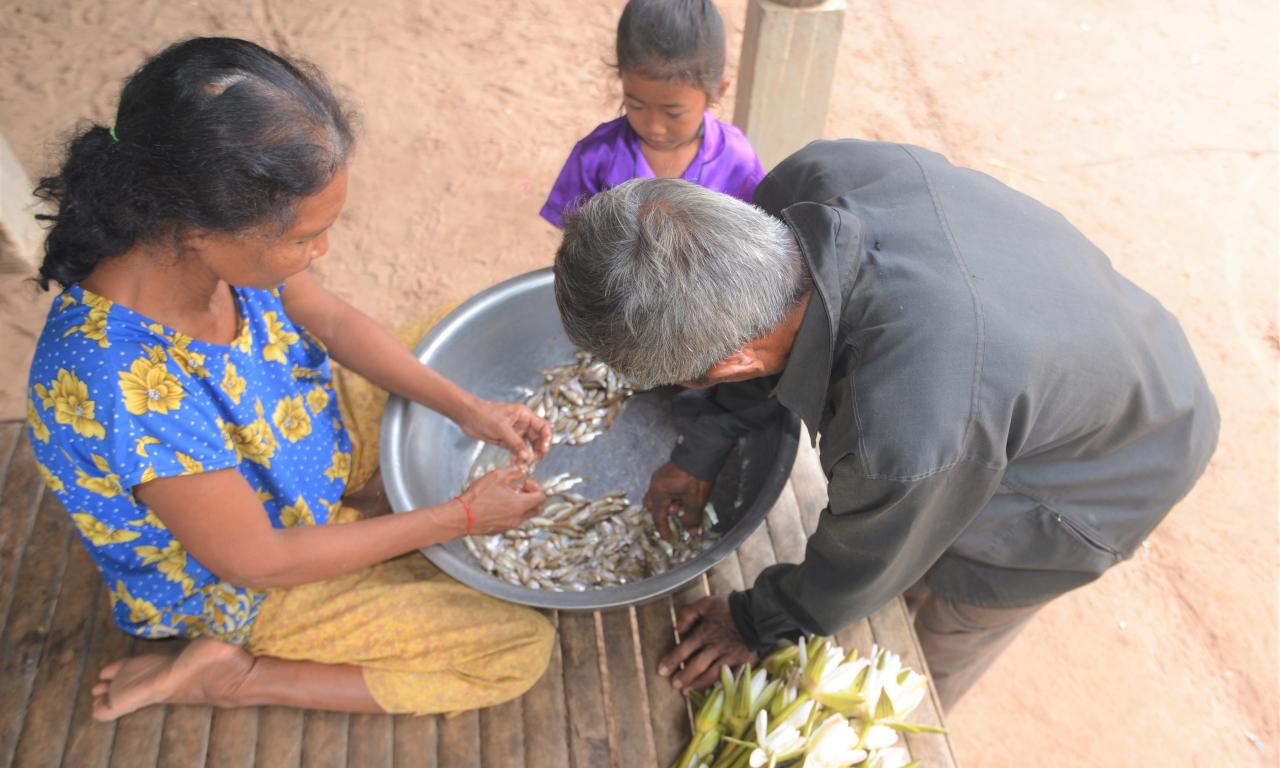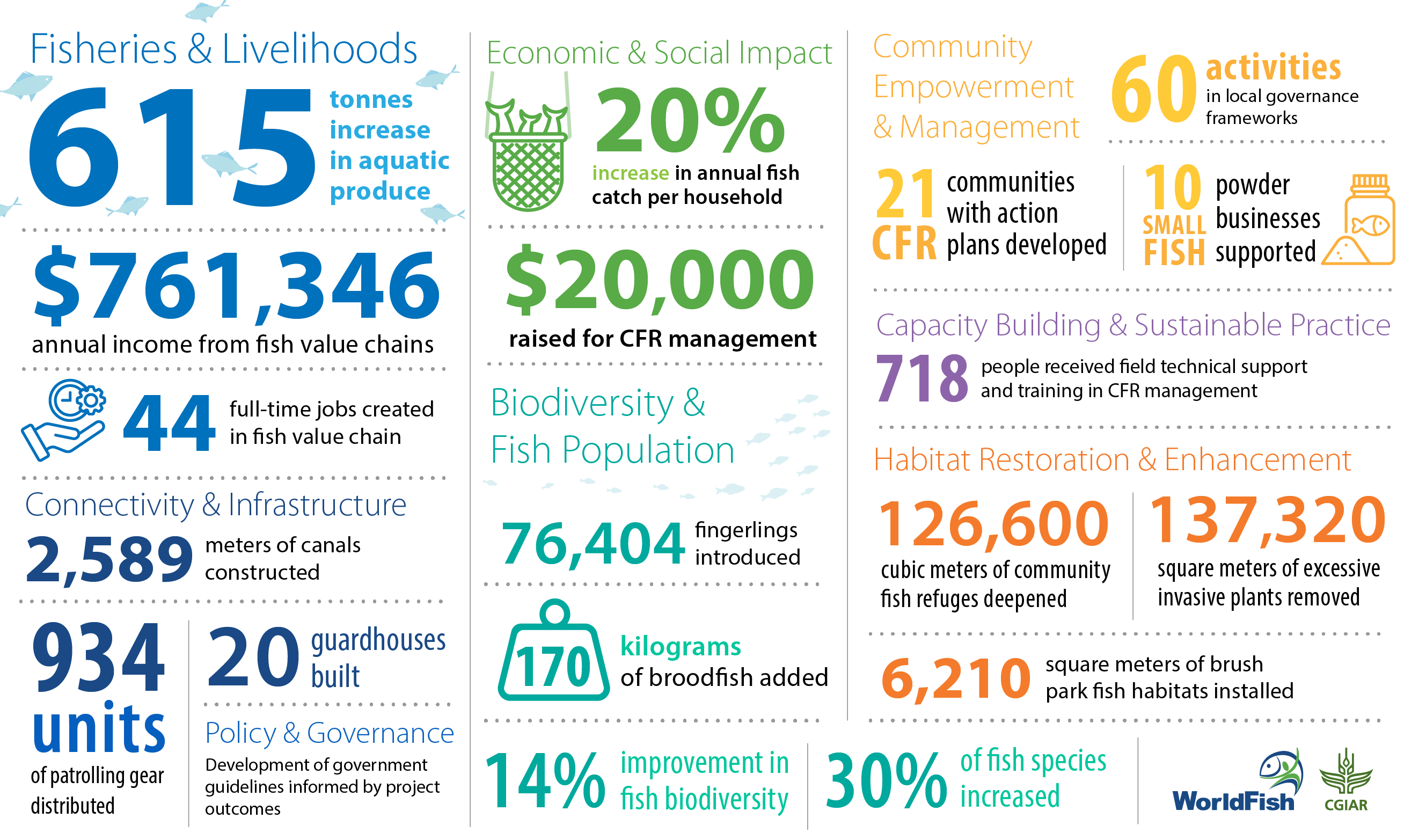
In Cambodia's Kampong Thom province, a couple of hours north of the capital Phnom Penh, local fishing practices have met with cutting-edge techniques and turned the tide on food insecurity and economic hardship.
The BMZ-funded project “Sustainable Aquaculture and Community Fish Refuges” (SAFR) was launched in December 2020 and concluded in March 2024. Implemented by GIZ and partners like WorldFish, this project enhanced traditional fishing techniques practiced for generations with innovative sustainable approaches.
What are Rice Field Fisheries and Community Fish Refuges?
In Cambodia, Rice Feld Fisheries is a unique practice where farmers harvest fish from the same fields that grow their rice. This is especially common when the fields are flooded in the rainy season. These fisheries are vital as they help farmers earn money and provide food for communities.
Community Fish Refuges (CFR) are safe zones for fish in these areas. They are ponds where fish live and breed, especially when the fields are dry. These refuges help keep the fish population healthy and reconnect to the rice field in the rainy season. During the rainy season, the flooded rice fields morph into fertile grounds for diverse fish species, which, in turn, support the rural families who harvest them. These fisheries provide an important supplement to the income and food supply, offering a fresh source of nutrition and help sustain the local ecosystem.
Success Strategies
The project’s success lies in a series of strategic enhancements to the rice fields and community fish refuges themselves.
Over 126,600 cubic meters of fish refuges were deepened, brush park habitats were installed and invasive vegetation was cleared - creating a more hospitable environment for fish populations to thrive.
76,000 fingerlings and substantial broodfish were introduced, which significantly boosted the diversity and amount of fish.
On the ground, the project constructed and renovated water canals to enhance connectivity between fisheries and rice fields, ensuring the sustainability of these aquatic refuges. Guardhouses were built, and patrolling gear was distributed to keep these revitalized spaces secure and well-managed.
Community empowerment was another cornerstone of the project. By developing detailed action plans and enhancing local business acumen, the project fostered a sense of ownership and responsibility among the communities. Training sessions for committee members and local authorities ensured they are equipped to sustain these gains independently, with the project also informing the development of Cambodian government guidelines for managing sustainable and resource-friendly fisheries.
Peng Toeu, Sampoar Village Chief of Kampong Thom, noted a reduction in land speculation and an uplift in fish catches, thanks to the newly established Community Fisheries Refuge.
“In the past, our lake suffered from conflicts over water pumping for rice, illegal fishing, and land ownership. But after establishing a Community Fisheries Refuge and registering with the fisheries administration cantonment, we've seen a positive change. By improving the fish habitat through activities like deepening certain areas, installing structures, planting flooded trees, and releasing fish, we've not only resolved conflicts but also seen an increase in fish catches for farmers in surrounding villages. The benefits of the CFR are clear, and we are committed to its continued management,” he said.
The Impact of the SAFR Project in Numbers

Changing Lives
In 2023, a WorldFish monitoring survey found that SAFR-CFR households were hauling in an average of 134 kilograms of fish annually from CFR zone of influence—a nearly 20% jump from when the project began.
Traditional Knowledge and Innovation
By combining traditional knowledge with innovation, the SAFR-CFR project has not only boosted fish populations and biodiversity but has also strengthened economic growth and social harmony in Kampong Thom. The project concludes with a legacy of empowerment and environmental stewardship and the promise of a sustainable future.
